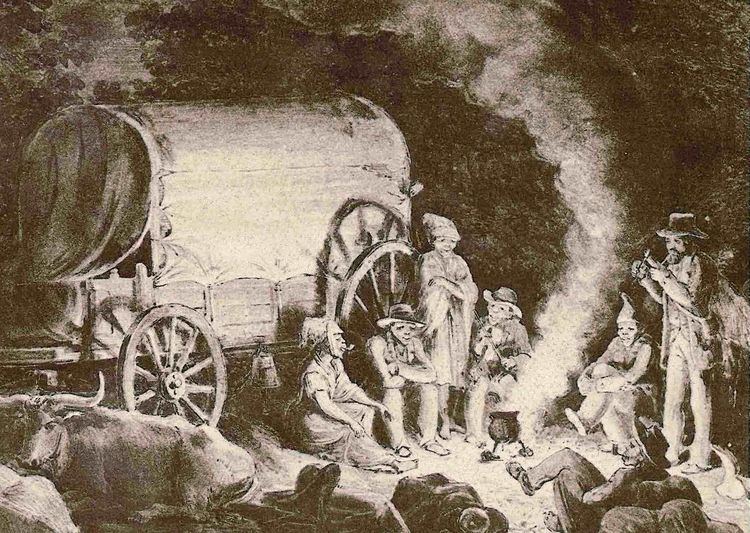 | ||
The Oorlam or Orlam people (also known as Orlaam, Oorlammers, Oerlams, or Orlamse Hottentots) are a subtribe of the Nama people, largely assimilated after their migration from the Cape Colony (today, part of South Africa) to Namaqualand and Damaraland (now in Namibia).
Contents
Oorlam clans were originally formed from mixed-race descendants of indigenous Khoikhoi, Europeans and slaves from Madagascar, India, and Indonesia. Similar to the other Afrikaans-speaking group at the time, the Trekboers, Oorlam originally populated the frontiers of the infant Cape Colony, later living as semi-nomadic commandos of mounted gunmen. Also like the Boers, they migrated inland from the Cape, and established several states in what are now South Africa and Namibia. The Oorlam migration in South Africa also produced the related Griqua people.
Name
The origin of the name is disputed, with at least a half-dozen interpretations found in the literature. However, none of them enjoys any credibility, all relying mostly on folk etymologies.
History
Beginning in the late 18th century, Oorlam communities migrated from the Cape Colony north to Namaqualand. They settled places earlier occupied by the Nama. They came partly to escape Dutch colonial conscription, partly to raid and trade, and partly to obtain herding lands. Some of these emigrant Oorlams (including the band led by the outlaw Jager Afrikaner and his son Jonker Afrikaner in the Transgariep) retained links to Oorlam communities in or close to the borders of the Cape Colony. In the face of gradual Boer expansion and then large-scale Boer migrations away from British rule at the Cape, Jonker Afrikaner brought his people into Namaqualand by the mid-19th century, becoming a formidable force for Oorlam domination over the Nama and against the Bantu-speaking Hereros for a period.
Emerging from populations of Khoikhoi servants raised on Boer farms, many of them having been orphaned and captured in Dutch commando raids, Oorlams primarily spoke a version of Dutch or proto-Afrikaans and were much influenced by Cape Dutch colonial ways of life, including adoption of horses and guns, European clothing, and Christianity.
However, after two centuries of assimilation into the Nama culture, many Oorlams today regard Khoikhoigowab (Damara/Nama) as their mother tongue. The distinction between Namas and Oorlams has gradually disappeared, so that today they are regarded as a single ethnic group, despite their different origins.
Clans
The Orlam people comprise various subtribes, clans, and families. In South Africa the Griqua are an influential Oorlam group.
The clans that migrated across the Oranje into South West Africa are, in order of their time of arrival:
